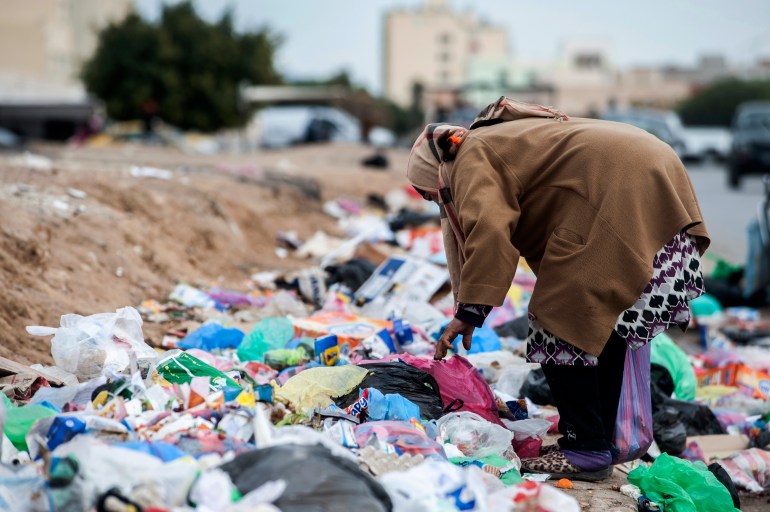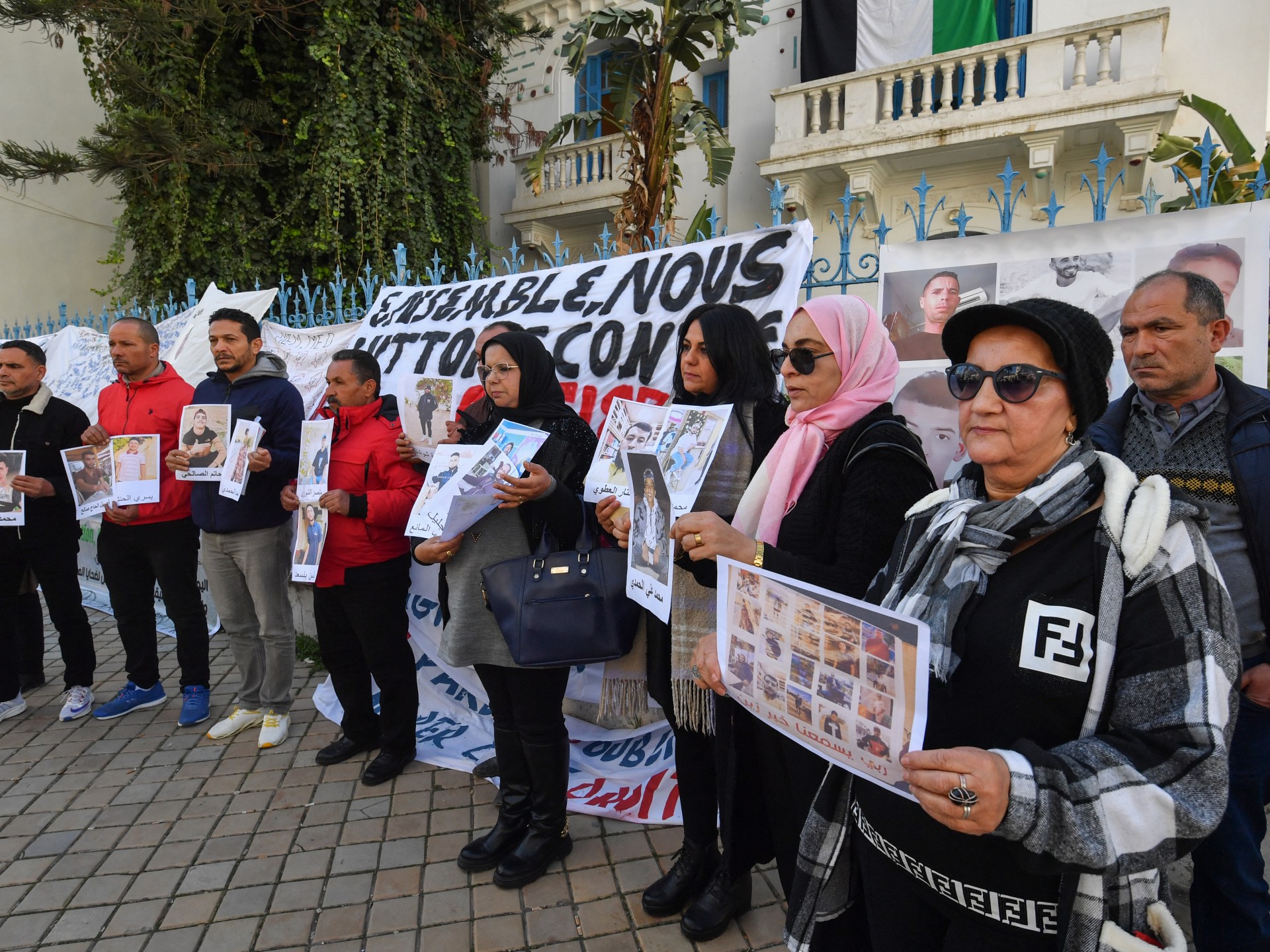The families of 37 Tunisians from El Hancha near Sfax who went missing at sea have taken their protest to the capital over what they say is official silence about their missing relatives.
Relatives of the missing people, aged between 13 and 35, said they received phone calls from their family members on board the boat at around 2:30pm on January 11.
However, by 10pm, all contact had been lost.
The boat has remained lost since.
‘The whole of Hancha is miserable’
In the wake of the disappearance, extensive searches have been undertaken by Tunisia’s coast guard, supported by teams from Italy and Malta.
But search operations appear to have faltered, with the last official comment on the issue coming by way of a press release in mid-January.
Fatma Jlaiel, whose 25-year-old brother Ali is missing, was among the families who travelled to the Syndicat National des Journalistes Tunisiens in Tunis on Tuesday, trying to bypass officials and take their case directly to the media.
“No one has contacted us from the government,” Fatma Jlaiel, whose brother, 25-year-old Ali, is among the missing.
“The whole of El Hancha is miserable,” she told a translator. “All you hear in the street are questions about news or rumours. Everyone you meet is hollow-eyed.
“Our mothers are sick. We’re constantly checking their blood pressure and sugar levels. They’re devastated.
“It’ll shortly be a month since the boat disappeared,” she said. “We’ve been receiving bits of information from here and there, but we’re doing most of the work ourselves. We’re undertaking the investigations the police are supposed to do,” she said.
Ali was one of the thousands of Tunisians who made their way without papers across one of the world’s most dangerous migratory routes.
Unable to secure regular employment at home, his most recent job had been as a nighttime security guard in Sfax, some 50km (30 miles) distant, which barely left him with enough money for coffee and cigarettes, his brother Mohammed said.
Rumours
In the absence of official information, a variety of theories are taking hold within a population starved of information and desperate for news of family members.
Rumours that the boat may have foundered off the island of Kerkennah, near Sfax, the country’s principal departure point for irregular migration, have been dismissed by relatives over a lack of evidence.
Other theories, like that the boat may have been diverted to Greece, have been investigated and dismissed by the El Hancha families.
Likewise, Tunisians in Italy have gone as far as appointing lawyers to work with authorities in scouring the detention centres where irregular arrivals are often held.

Contacted by Al Jazeera – and stressing he had no knowledge of the case – Italian prosecutor Salvatore Vella, who deals extensively with undocumented migration, said it was unlikely the disappeared Tunisians had arrived in Italy.
“Typically, the first thing Tunisians do on arrival is contact their families,” he said. That they had not done so, he said, did not bode well.
For the El Hancha families – refusing to accept that their relatives may have been lost at sea – Libya, some 320km (200 miles) distant, remains an increasingly tantalising, prospect.
Armed gangs from western Libya have long traded in the labour of captured refugees, often intercepting convoys of undocumented Black migrants as they seek to cross into the country and bringing them to detention centres where conditions are reported to border upon the medieval.
Ali Buzriba, deputy for the Libyan coastal town of Zawiya told Italian news agency Nova that no boats from Tunisia had arrived in the region in the days after the El Hancha boat’s departure, saying that the seas had been particularly rough at that time.
In addition, Buzriba said he had contacted the head of the maritime division of Libya’s Stability Support Apparatus who also had no information on the missing boat.
Silence
Majdi Karbai, a member of parliament who is in contact with the El Hancha families, told Al Jazeera that Tunisian authorities’ silence on the issue was because of the character of Tunisian officialdom, as well as concern over the implications of any statement.
“They do not talk to the citizens, they do not talk to the press. Their concern is that this may lead to a repeat of the previous unrest at Zarzis,” he said, referring to the disturbances that followed the loss of a boat carrying 17 Tunisians from the small southern town two years ago, which eventually became a national incident.
“The families have this idea that as long as there are no bodies, their relatives are alive.”
On the phone from El Hancha, Fatma is still angry.
“We need the government’s help and that of the Ministry of Interior’s,” she said of the department with overall responsibility for the search.
“All we’ve been given is a phone number to call when we hear news from our sources. That’s what we do: call the police ourselves to say that our children might be at a certain place.”
“We need to know where our flowers are,” she said, referring to her term for the missing passengers, “We need our government to do its job and look for our precious kids. We’re devastated.”
More than 97,000 people crossed the Mediterranean from Tunisia to Italy in 2023, according to the UNHCR, the majority of those transiting through Tunisia from sub-Saharan Africa. Of those, at least 2,500 are thought to have died.
The true number is likely far higher.
Check out our Latest News and Follow us at Facebook
Original Source

